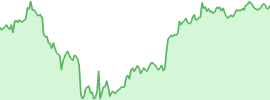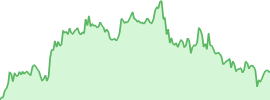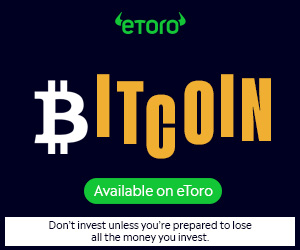Perpetual futures no longer live only on centralized platforms. A new class of on-chain venues lets traders hold their own assets, see how liquidations work, and execute at speed without handing custody to a company. For readers in the UK who hit KYC roadblocks on CEXs, these platforms provide direct access from a wallet with full price transparency.
Our 2025 review focuses on where traders can actually get filled at size. We score perp DEXs on liquidity depth, open interest, execution quality, leverage, fees, and operational integrity, then order them by real trading advantage rather than hype.
Table of Contents
Top Decentralized Perpetual Exchanges in 2025
Below is our updated ranking of the seven best decentralized perpetual exchanges in 2025, chosen for their real liquidity, execution quality, and trustless on-chain performance.
1. EdgeX – Best Overall Decentralized Perp Exchange
Blockchain: Ethereum Layer-2
EdgeX delivers high-performance perpetual trading with verifiable on-chain settlement. Its Layer-2 engine executes 200,000 orders per second with sub-10 ms latency, processing over $5 billion in daily volume and $1.5 billion in open interest. Custody stays on Ethereum, while liquidity aggregates across chains to keep spreads tight and execution precise.
EdgeX’s Points Program rewards real trading activity (volume, vault participation, and referrals) earning users future token allocations tied to platform growth. Order-book data shows BTC/USDT spreads under 0.01% with over $6 million depth, among the best in DeFi. Its upcoming V2 upgrade introduces a modular “financial infrastructure chain,” enabling permissionless product launches under its Proof of Demand framework.
Key Features:
- 150+ perpetual pairs including BTC, ETH, SOL, and BNB
- Maker 0.012%, taker 0.038%; VIP tiers to 0.000% / 0.024%
- Up to 100× leverage
- Deep liquidity and cross-chain aggregation
Pros: Low slippage on large trades; sustainable rewards system.
Cons: Multi-chain expansion still in progress.
Wallets: MetaMask, WalletConnect, Coinbase Wallet.

2. Lighter – Zero-Knowledge Perp DEX Built for Speed
Blockchain: Ethereum zk rollup
Lighter is the first perpetual exchange to validate every trade and liquidation with zero knowledge proofs, combining speed, transparency, and Ethereum-level security. Built for millisecond execution and tens of thousands of orders per second, it verifies each transaction on-chain for full auditability.
The platform clears over $220B in monthly volume with about $3.5B in open interest. Retail traders pay no fees, while Premium accounts for active firms charge 0.002% maker and 0.02% taker. Lighter’s Points Program rewards consistent trading, and its zk-based emergency exit system protects user funds even if the rollup halts.
Key Features:
- zk verified matching and settlement on Ethereum
- Up to 50× leverage on BTC, ETH, and other majors
- Zero fees for retail, low cost for professionals
- “Desert Mode” emergency withdrawal to Ethereum
Pros: Fast execution, zero fee retail trading, verifiable on chain security.
Cons: Limited asset range compared to larger DEXs.
Wallets: MetaMask, WalletConnect, Safe.

3. Hyperliquid – Deepest Liquidity on a Custom L1
Blockchain: Hyperliquid L1
Hyperliquid dominates DeFi derivatives with around $12.5B in daily volume and over $2T traded since launch. Its custom Layer-1 chain and HyperBFT consensus confirm trades in a single block and handle 200,000+ orders per second, offering CEX-level performance with full transparency.
Perpetuals use USDC margin and USDT settlement, with maker rebates up to –0.003% and taker fees from 0.05%. The on-chain order book covers 100+ markets with deep liquidity and minimal slippage. Through HIP-3 governance, communities can list new markets securely.
Key Features:
- 100+ markets with up to 40x leverage
- Maker rebates up to –0.003%; taker fees from 0.05%
- Community listings via HIP-3 for any asset
- Fully transparent, on-chain order book
Pros: Deepest liquidity and fastest execution in DeFi.
Cons: Limited incentives for traders.
Wallets: MetaMask, Coinbase Wallet, Rabby.

4. Aevo – Unified Perps, Options & Pre-Launch Futures
Blockchain: Aevo L2 Appchain (OP Stack + Celestia DA)
Aevo combines perps, options, and pre-launch futures in one derivatives platform built for speed and flexibility. Its off-chain order book and on-chain settlement achieve sub-10 ms latency, enabling fast execution for hedging and basis strategies. The exchange supports over 60 markets, including early-access futures for unlisted tokens.
The native aeUSD stablecoin automatically earns around 4.75% yield, improving collateral efficiency and reducing idle capital drag. Aevo’s Layer-2 design, using Celestia for data availability, lowers transaction costs and gas fees, creating one of the most cost-effective derivatives environments on Ethereum.
Key Features:
- Unified account for perpetuals and options
- Pre-launch futures converting to perpetuals post-listing
- Up to 20× leverage with cross-margin support
- Yield-bearing aeUSD collateral for traders
Pros: Early access to new tokens, efficient hybrid margining, and yield on collateral.
Cons: Lower liquidity on core pairs compared to larger DEXs.
Wallets: MetaMask, WalletConnect.

5. ApeX – Multi-Asset Perp DEX with Tokenized Stocks
Blockchain: Layer-2
ApeX integrates crypto perpetuals and tokenized U.S. equities like Apple and Tesla, allowing 24/7 trading across both asset classes. The platform reports around $4.5B in daily volume, $29B monthly, and $150M in open interest, positioning it among the most active multi-asset DEXs.
Its Grid Bot feature provides negative maker fees to reward liquidity, while cross-margin accounts and hourly funding optimize capital efficiency. The ApeX Buyback Program allocates an initial $12M and up to 90% of protocol revenue to repurchase and lock APEX tokens in a public on-chain address for three years, directly tying revenue to token value.
Key Features:
- 45+ markets spanning crypto and tokenized equities
- Up to 100x leverage on BTC, ETH, and major assets
- Gas-free trading, full on-chain transparency, no KYC
- Revenue-backed token buybacks with verifiable on-chain locks
Pros: On-chain stock exposure, strong token mechanics, and efficient capital use.
Cons: Limited depth on less traded assets; reliance on self-reported metrics.
Wallets: MetaMask, WalletConnect.

6. Aster – Binance-Backed High-Leverage Multi-Chain DEX
Blockchains: BNB Chain, Ethereum, Arbitrum, Solana
Aster, supported by YZi Labs and Binance’s CZ, offers unmatched leverage in DeFi, reaching 1001× on BTC and 250× on ETH. It provides both Pro Mode for order-book trading and Simple Mode for one-click execution. Hidden orders allow large traders to conceal size and direction, while stock and forex perpetuals expand its product range.
The platform’s Trade & Earn program lets users earn 16–20% APY on collateral like USDF or asBNB while trading, improving capital efficiency. Aster aggregates liquidity across supported chains, allowing direct multi-chain execution without manual bridging.
Key Features:
- Up to 1001× leverage on crypto perps
- Cross-chain trading with hidden orders and MEV protection
- Yield on collateral through Trade & Earn
- Stock and forex perpetuals in Pro Mode
Pros: Extreme leverage, privacy tools, and passive yield for traders.
Cons: Liquidity still trails deeper order-book DEXs.
Wallets: MetaMask, Binance Wallet, Phantom.

What Are Decentralized Perpetual Platforms?
Decentralized perpetual platforms let traders open perpetual futures contracts (derivatives with no expiration date) directly on-chain. Unlike centralized exchanges, they operate through smart contracts, giving users full control of their collateral, leverage, and liquidation without intermediaries.
There are two dominant models. AMM-based exchanges use liquidity pools and algorithmic pricing to automate trades, while order book DEXs match buyers and sellers directly for tighter spreads and better execution. Some of the most advanced protocols combine both with oracle feeds like Pyth and Chainlink to ensure deep liquidity and accurate pricing across markets.
If you prefer trading through regulated centralized venues, you can compare options in this UK crypto exchanges guide.
For traders who value self-custody, transparency, and leverage, decentralized perpetual exchanges are becoming the foundation of modern DeFi derivatives.
Understanding Fees and Funding Rates on Perp DEXs
Trading costs on decentralized perpetual exchanges extend beyond entry and exit fees. Every trade involves maker and taker fees, which reward liquidity providers and compensate for immediate executions. Maker orders add liquidity to the order book and often earn small rebates, while taker orders remove liquidity and pay a slightly higher fee.
Another crucial factor is funding rates, the recurring payments between long and short traders that keep perpetual prices aligned with the spot market. When longs dominate, they pay shorts, and the reverse occurs when shorts are in control. On most platforms, funding is recalculated every few hours based on open interest and price premiums.
For active traders, managing both fee structure and funding exposure is key to maintaining profitability. Even small changes in rates or execution costs can significantly affect returns in highly leveraged positions.
Decentralized Perpetuals Are Winning Market Share
Decentralized perpetual exchanges have entered a strong expansion phase, capturing 16.7% of global perpetual trading volume in 2025, according to a recent perp DEX market report. This growth follows a record year for on-chain derivatives, with trading volume in decentralized markets surpassing $8.6 trillion since 2022, based on data from DefiLlama.
The trend reflects a clear shift toward self-custody and verifiable execution, as traders reduce reliance on centralized platforms. Exchanges such as Hyperliquid and EdgeX now offer CEX-level performance, deep liquidity, and transparent on-chain settlement.
With every improvement in speed, composability, and scalability, decentralized perpetuals are positioning themselves as the natural home for active derivatives traders seeking both performance and control.
What are Perpetual Contracts?
Perpetual contracts are derivatives that allow traders to speculate on asset prices without an expiration date. Unlike standard futures, they can be held indefinitely, as long as margin requirements are maintained. These contracts offer high leverage, enhancing potential returns and risks.
To keep perpetual prices aligned with the underlying asset, funding rates are regularly adjusted between long and short positions. This mechanism ensures price stability, making perpetual contracts ideal for continuous, leveraged trading without the time constraints of traditional futures.
FAQs
Are decentralized perpetual exchanges safer than centralized ones?
Perp DEXs reduce counterparty risk by letting users hold their own collateral on-chain. While smart contract exploits remain a concern, leading platforms undergo continuous audits and publish real-time proof-of-reserves, offering transparency that centralized exchanges often lack.
How do decentralized exchanges handle liquidations?
Liquidations on perp DEXs are executed automatically through smart contracts, based on on-chain price oracles. Some platforms use backstop liquidity modules or insurance funds to cover bad debt, protecting traders from cascading liquidations during volatility.
Can institutions trade on decentralized perpetual exchanges?
Yes. Increasingly, institutions use smart contract wallets and API integrations to access on-chain derivatives. Platforms like Aevo and Hyperliquid now support compliance modules and analytics tools designed for fund-level execution.
What factors determine funding rate volatility on perp DEXs?
Funding rate swings depend on market imbalance between long and short positions, oracle lag, and liquidity depth. Traders can minimize exposure by using platforms with stable rate formulas or by monitoring open interest ratios across competing DEXs.
Conclusion
Decentralized perp exchanges are reshaping derivatives trading by putting execution, liquidity, and custody directly in the hands of traders. The next edge will come from understanding how each platform handles funding rates, incentives, and risk controls.
Focus on venues that publish on-chain data, maintain consistent funding, and reward real activity, as these will define where serious traders migrate in 2025 and beyond.





 usdt
usdt xrp
xrp

